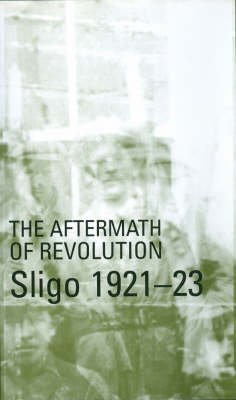Sligo 1921-23 - Michael Farry
Main menu:
- Home Page
- Poetry
- History

The Aftermath of Revolution -
Michael Farry
This is a fascinating study of the effects of the Irish Civil War in Sligo, a relatively quiet county, during the War of Independence, which proved to be one of the most troublesome areas for the Free State Army in the Civil War.
For a long time, the west of Ireland had been largely overlooked in studies of the war. Farry discusses the social and economic effects of the war: the build-
This is a highly successful marriage of political, social, and economic history.
Publisher: University College Dublin Press (2000)
www.ucdpress.ie
288 pages
PURCHASE ON PUBLISHER'S WEBSITE
CONTENTS
FOREWORD by Michael Hopkinson
INTRODUCTION
1 THE TRUCE PERIOD: The Position of the IRA–Local Government Divisions–Amalgamation of
Poor Law Unions–IRA Interference in Local Government–IRA Organisation
2 THE TREATY: Reactions to the Treaty–Arguments for and against the Treaty
3 THE DRIFT TO CIVIL WAR: January-
4 THE COURSE OF THE CIVIL WAR: July 1922: August-
5 THE GEOGRAPHY OF THE CIVIL WAR IN COUNTY SLIGO: Distribution of Civil War Incidents–Civil War and War of Independence Incidents Compared–Distribution of Civil War Activists
6 COUNTY SLIGO PARTICIPANTS: The Social Dimension of the Civil War Division–Occupations of Fathers of Participants–Land Valuation–House Class and Valuation–Ages of Participants–Officers and Rank and File
7 DAILY LIFE IN COUNTY SLIGO DURING THE CIVIL WAR: Communications–Social and Sporting Events–Sporting Activity–School Attendance–Food Prices–Industrial Unrest–Agricultural Prices–Co-
8 LAW AND ORDER: The Truce Period–From Treaty to Civil War–The Civil War Period
9 SLIGO PROTESTANTS AFTER THE REVOLUTION: The Decline in the Protestant Population–The Protestants of County Sligo–Protestant Social Organisations–1916-
CONCLUSION
NOTES
BIBLIOGRAPHY
INDEX